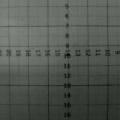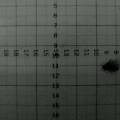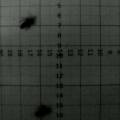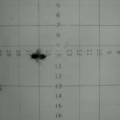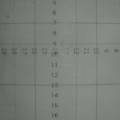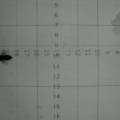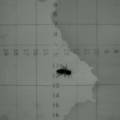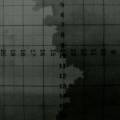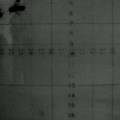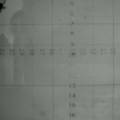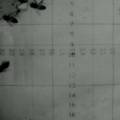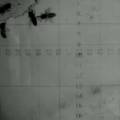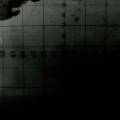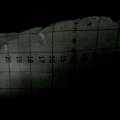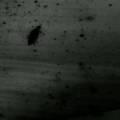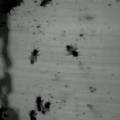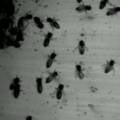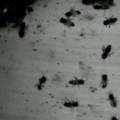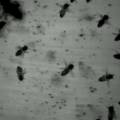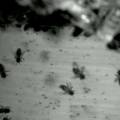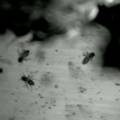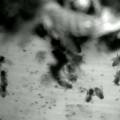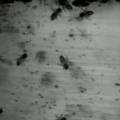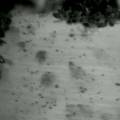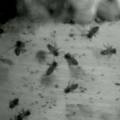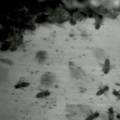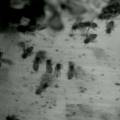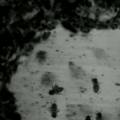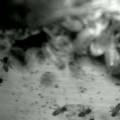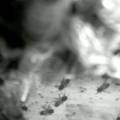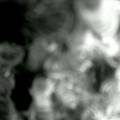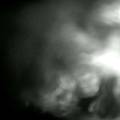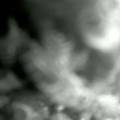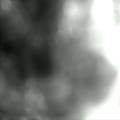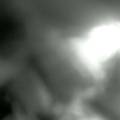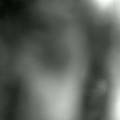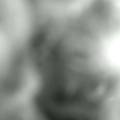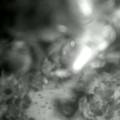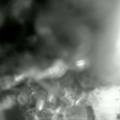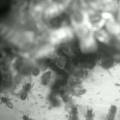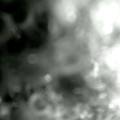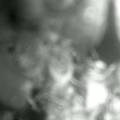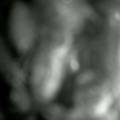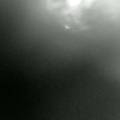This is an old revision of the document!
Table of Contents
BEEHAVE
Curated by Martina Millà for Fundació Miró.
With Beehave, the Fundació Miró invites its visitors to find out about the possibilities of urban bee keeping and delve into the current debate on the importance of these insect pollinators. The project will begin with an exhibition, which will include works of a group of both local and international artists in various formats, as well as specific installations within and outside of the the museum galleries. Beehave will conclude with two publications.
This wiki-page keeps track of the development and the production of all 3 parts of the Bee Agency installation in Fondació Miró during the exhibition Beehave.
titles
film title: the Variation Games [Variation Games are games where the set of rules is constantly adapted by the players]
totems title: Locus Delicti ; Distopia of the Senses
sem photos title: Bee Agency, a Ménage à trois [Agency is the capacity of an actor to act in a given environment]
The installation is constructed of 3 (sub)parts with each their own specific artistic and technical language, but all 3 parts exist only in a dynamic relationship to each other.
scanning electron micrographs: Bee Agency, Ménage à trois
All samples are collected in the Urban Bee Lab, my apiary and rooftop garden laboratory in the center of Brussels. I made the images with a Scanning Electron Microscope at the Vrije Universiteit Brussels (VUB), in the lab of chemical engineering, with the kind help of Dr. Alexander Lutz.



sala 17 (plan) and Bee Agency photos (paravan), perspective
Panels: 190 x 244 (large), 150 x 244 (small)
Photos: 160 x 213 (large), 80 x 80 (small)

panels front side, orthographic view
1. Glossa (x 150 magnified)
Glossa is the Greek word for ‘tongue’. The glossa is similar to a long segmented cylinder covered with hairs. When the bees are foraging, the tongue is extended and immersed into the nectar. The hairs on the glossa erect to collect the liquid and the nectar is sucked into pharynx (throat). Besides being a feeding instrument, the bee-tongue serves also for licking the queens’ pheromones which regulate the life in the hive. So it is also a kind of communication instrument. The length of a sucking proboscis of a honey bee is 6,5 mm.
2. Scopa (x 480 magnified)
Bees collect pollen, floral oils and other chemicals from plants. The scopa is a particularly dense mass of elongated hairs on the hind leg of a honeybee. Together with the pollen-basket the scopa form a pollen-carrying apparatus that is used to transport pollen from the flower to the nest.
3. Mentha_Single Pollen Grain (x 3400 magnified)
An isolated pollen grain of Mentha spicata, Lamiaceae. 78,9 micron and 3400x magnifed.
4. Black Debris (x 250 magnified)
The black debris is a small pollution particle that I collected on the bottom of the beehive. The fur of the honeybee is electrostatically charged and thus the hairs attract, besides pollen, also plenty of pollution particles that the bees bring back to the beehive.
5. Proboscis (x 150 magnified)
A proboscis is an elongated appendage from the head of a honeybee. The term proboscis usually refers to the tubular mouthparts used for feeding and sucking. Relative to the size of the average honeybee, the proboscisis long, a result of evolution ensuring the bee can reach the center of a flower to collect nectar.
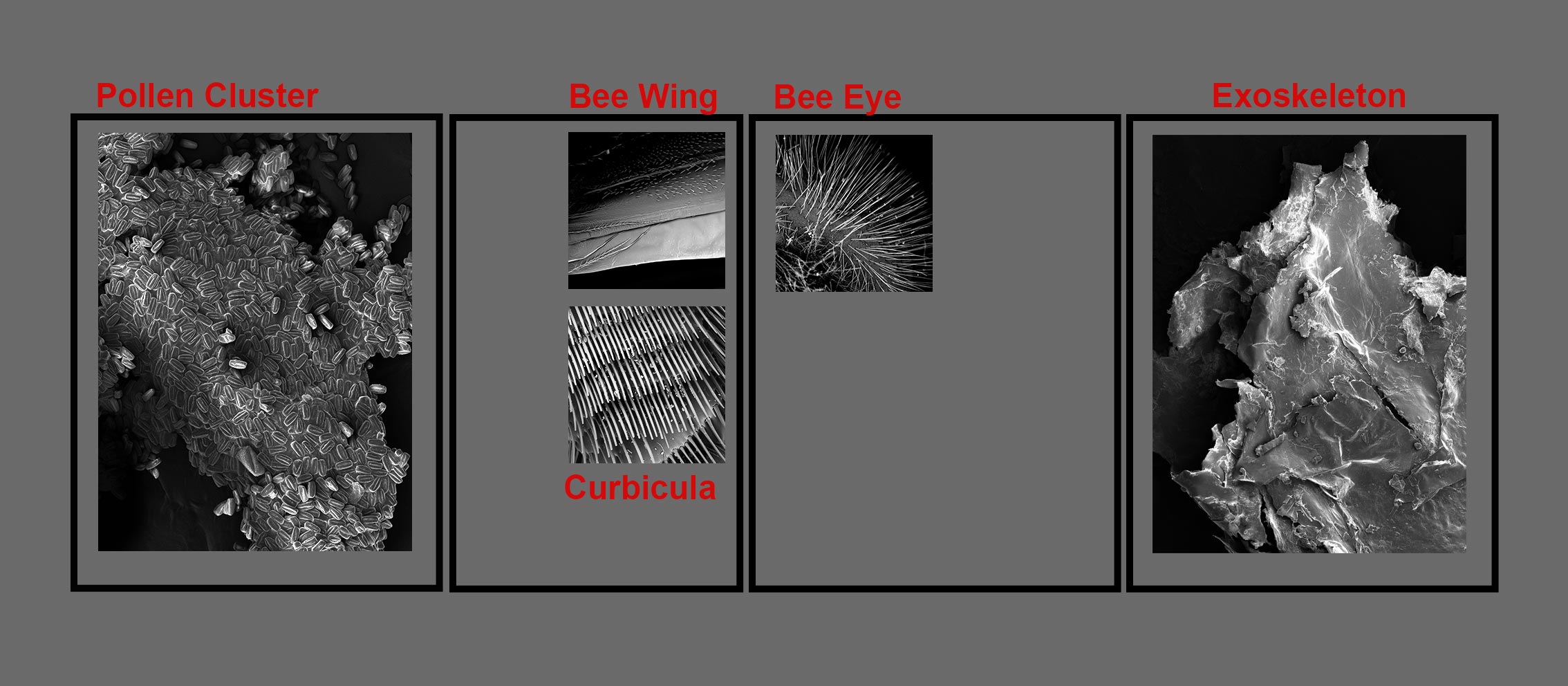
panels back side, orthographic view
1. Pollen Cluster (x 250 magnified)
A cluster of pollen from a non-identified flower. The apertures and the flat aspect of the pollen in the cluster tell us that the pollen are probably some days old. Pollen are an important source of nutrition in the life and development of the young honeybee.
2. Bee Wing (x 270 magnified)
The wings of the honeybee have a very specifc design and their fight mechanism is an example of delicate technology. A bee carrying a load of nectar and pollen would require a wing too large to allow it to enter many of the fowers it collects from. Therefore the honeybee is equipped with a double wing. When fying, the two parts hook together with some kind of Velcro-system. And they fold neatly into one wing when reaching the fower to collect the nectar.
3. Curbicula (x 265 magnified)
The honey bee has a pollen basket or curbicula. This is a polished cavity surrounded by a comb of stiff hairs. The bee moistens the legs, head and body with her extruded tongue and brushes the pollen that stick everywhere to the back of the body. With the pollen comb the pollen are pressed and compacted before being transferred to the pollen basket on the outside surface of the hind legs.
4. Bee Eye (x 295 magnified)
The bee’s eyes differ greatly from human eyes. They consist of a pair of compound eyes made up of numerous six-sided facets. They also have three simple eyes (occuli). Despite this, their vision is sharp for a distance of only 1 meter. A compound eye cannot register the fne detail of our own eyes, but it is particularly good at detecting and following motion. Bees navigate by ultraviolet light which penetrates clouds and they use the sun as a reference point to communicate to other bees the angle of fight to be followed to arrive at newly discovered foraging fields.
5. Exoskeleton (x100 magnified)
August 2017: I prefer to work with large prints of the micrographs instead of making wallpaper from it. I think the photos are really beautiful and it is a pity to degrade them to a wallpaper (which has a different, oppressive function). By making large prints, it will enhance the idea to be ‘inside’ the bee universe. I am now researching how large I can go with the prints, and on which material (photopaper or fabric). I will hang them directly on the wall without other support. The wall behind the photos is white.
December 2017: The idea is to make a structure of 4 connected frames that are standing free in the space (see plan). The frames, made out of steel or wood, are slightly bigger than the prints and form an irregular trail that starts in the lower corner of the room and leads towards the ultimate corner in the back. It stops before the projection and the totems. The B/W prints hang freely in the frames and the whole evokes a transparent view.
totem installation: Locus Delicti, Distopia of the Senses
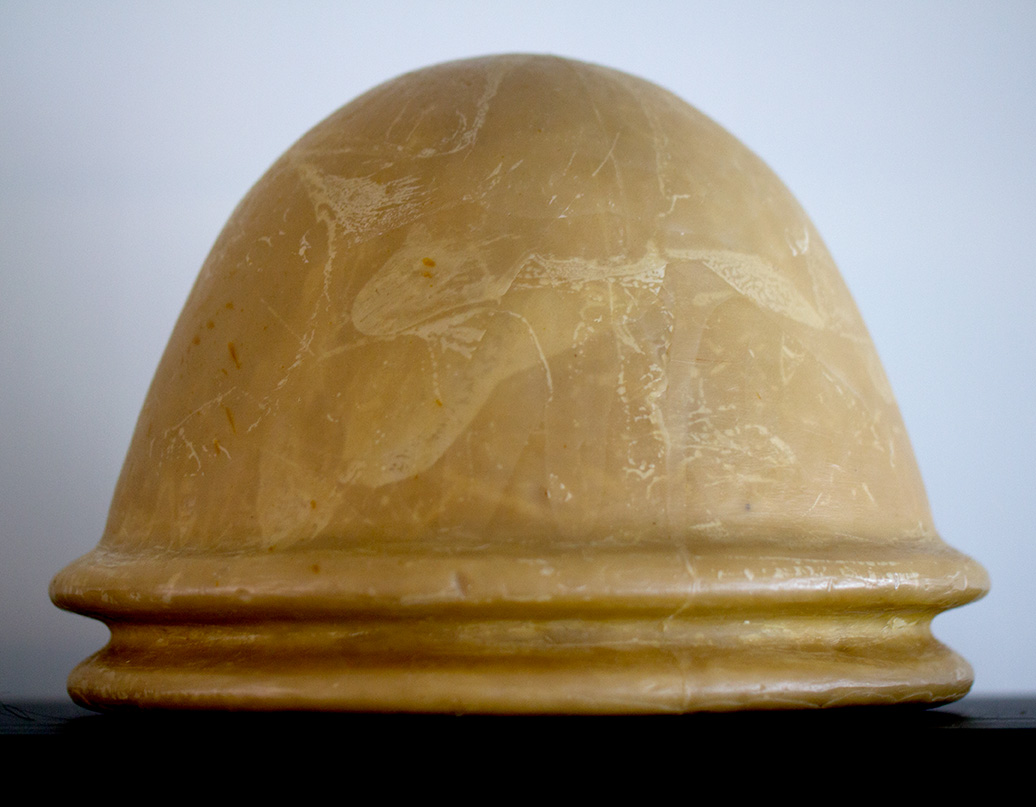
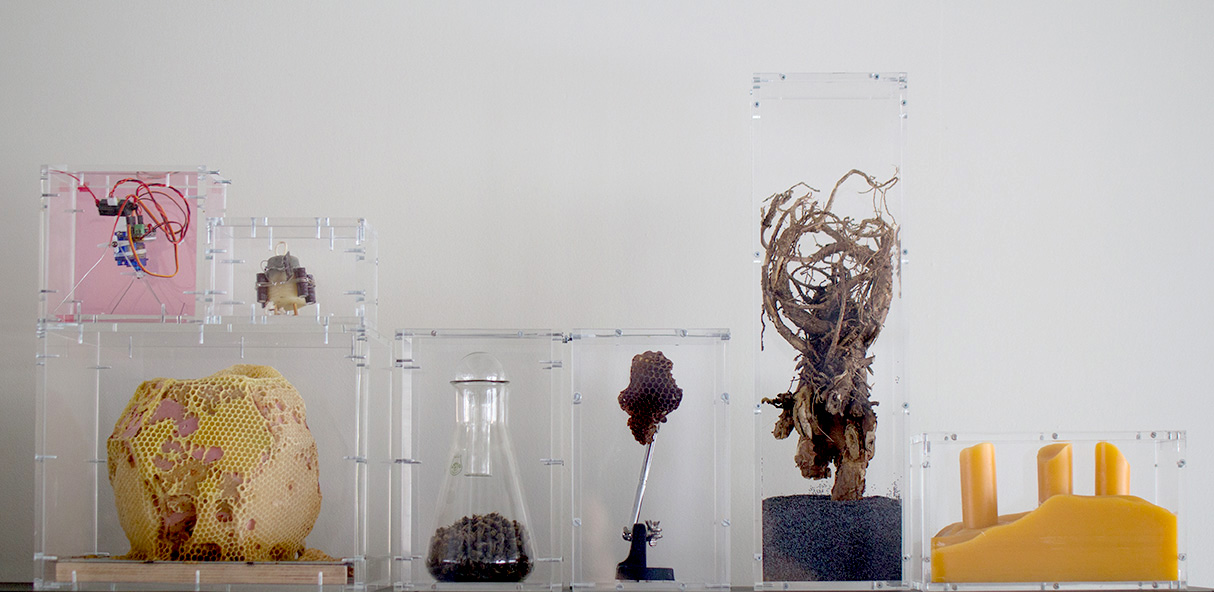
objects for the totems: Locus Delicti, Distopia of the Senses

1. Piece of Comb (140x15x15)
2. Golden Beehive (50x38x38)
3. Wax Hexagon (150x30x31)
4. Tree Trunk (110x15x16)
5. Dead Bees (140x16x15)
6. South|East|West (130x25x16)
A group of 6 brightly colored totems is installed in the middle of sala 17. The totems vary in height, ranging from 110cm high to 150cm high. The primary material of the totems is wood, painted white. This basis is clad with all kinds of fluorescent transparent plastics (orange, bright red, luminous blue) and bright colors representing the attractive colores of flowers. On the pedestals is a range of plexiglass boxes on display. All boxes contain bee/plant-related materials, representing the endangered species and vanishing ecosystems. The whole radiates an uncomfortable feeling of distopia, a place delict.
film: the Variation Games
The video is an edit of a year long audiovisual observation material on the behaviour of a honeybee colony. The recordings are made with an infra-red camera and with contact microphones inside the beehive. The content of the film focuses on the first 6 weeks of observation: the building of the nest. It shows how the bees are scanning the empty space and how they start organizing their building activities to appropriate the locus as their own territory. The images demonstrate and reveal decision making, networking, collaboration, collective intelligence.
Click here for narrative and information on the gathering of the observation material: observation rushes & annotations
werkmateriaal (voor uitgebreide annotaties zie bovenstaande pagina)
- 1 en dezelfde bijenkast heb ik gemonitord met 2 cameras: 1 infrarode die binnen filmde en 1 gewone webcam die de bijen buiten filmde terwijl ze de bijenkast in en uit vliegen.
- De ene camera staat lateraal, de andere staat in topshot opgesteld. (Ik kan er eens een tekeningetje van maken.)
- De (infrarode)camera die lateraal filmt, filmt binnenin een ‘super' (of ‘honingzolder’ in nl). Dat is een box die bovenop de box met het nest wordt gezet, en waarin door de bijen de honingreserve wordt opgeslagen. Deze box is bij aanvang leeg. De bijen moeten eerst wasraat bouwen aan de lege topbars, vooraleer ze kunnenbeginnen om de honing op te slaan.
- de ordinaire webcam die in top is gemonteerd, filmt de activiteit van de bijenkolonie. Deze wordt gemeten door het aantal bijen dat in/uit het nest vliegt te monitoren. Over verloop van maanden (naar de zomer toe) maar ook zeer nauw gerelateerd tot de dagtemperatuur en het uur van de dag, zal die activiteit toenemen omdat de bijenkolonie uitbreidt.
- ondertussen zijn de ‘huisbijen’ begonnen met het uitbouwen van de raat voor de honingzolder. Hun activiteit is dus ook gerelateerd aan de uitbreiding van de kolonie.
- er is dus een timestamp-relatie tussen de informatie van de 2 camera’s
- voor de film ‘Variation Games’ (altijd hetzelfde en toch telkens anders) heb ik een stukje film geselecteerd van beide camera’s, telkens op hetzelfde uur, dit enkele weken (± 12 weken) na mekaar (telkens 3 minuten om 13:00 uur).
technical info op top projection
Panasonic PT EZ 580 EJ
https://panasonic.net/cns/projector/calculator/tdcen/calculator/html/installation/ez580.html
Top down projection; distance 300cm from ceiling (340cm=max.); aspect ratio 16:10; lens=ET-ELS20 (1.7–2.8:1, zoom);
Une fois le projecteur placé, nous pouvons faire en sorte que l'optique soit à 3,24 cm du sol.
Avec ces mesures, le diamètre du cercle serait de 112 cm.
Le ratio d'aspect est de 179 x 112 (16:10).
Variation Games, test edit 20171216 with sound
installation: the Transparent Beehive
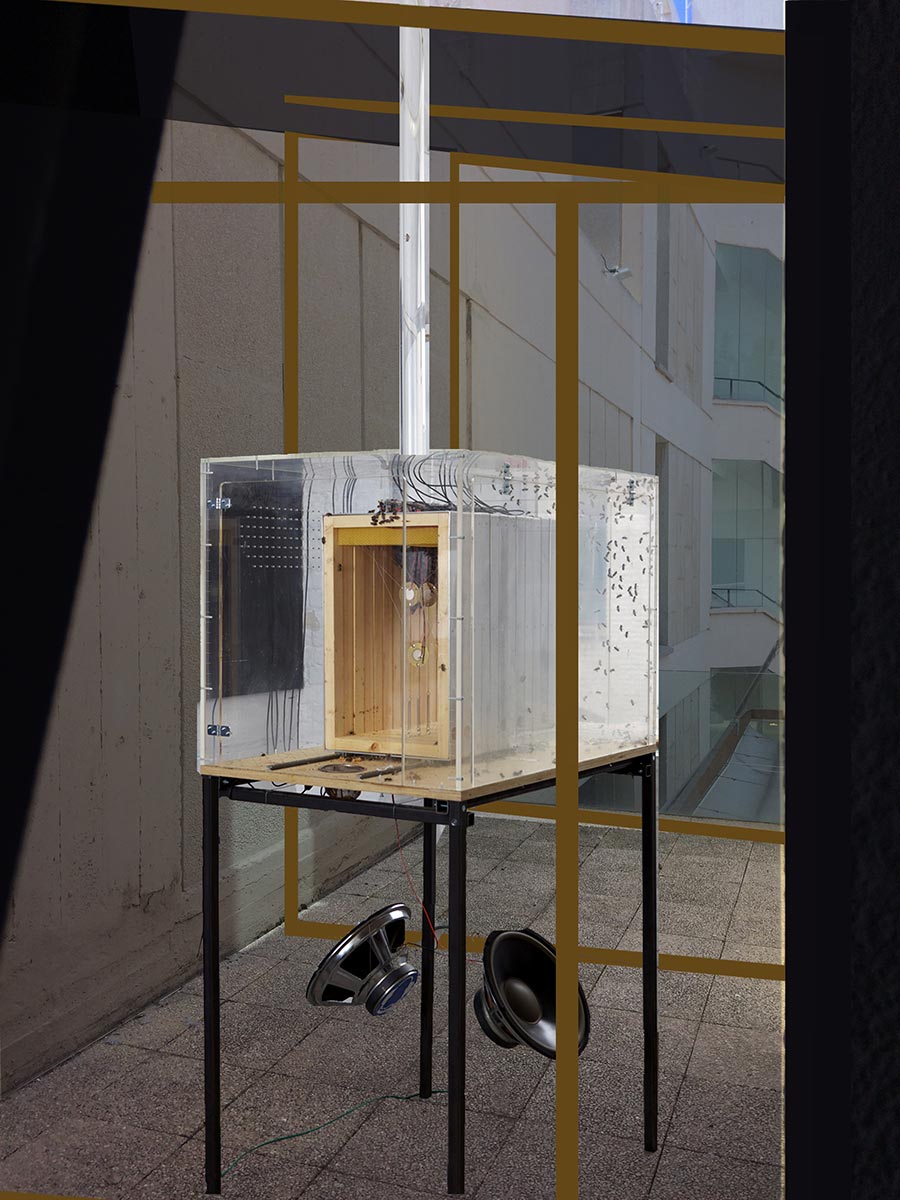
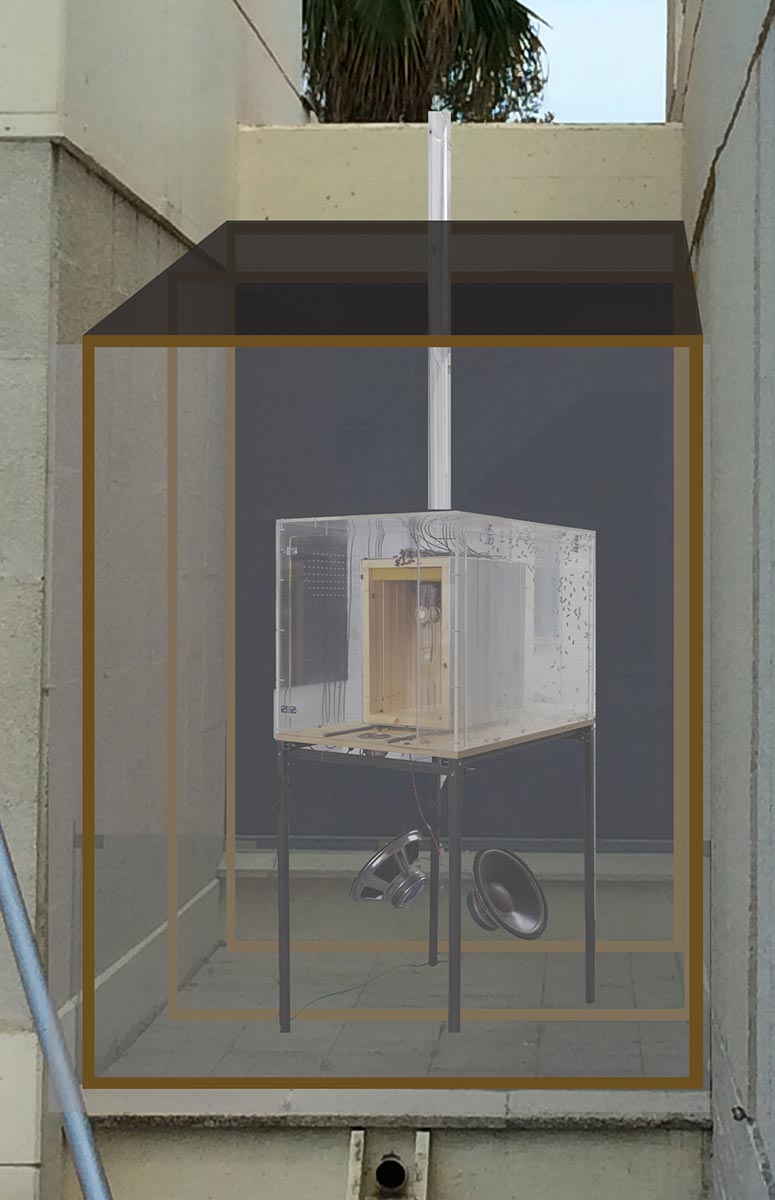
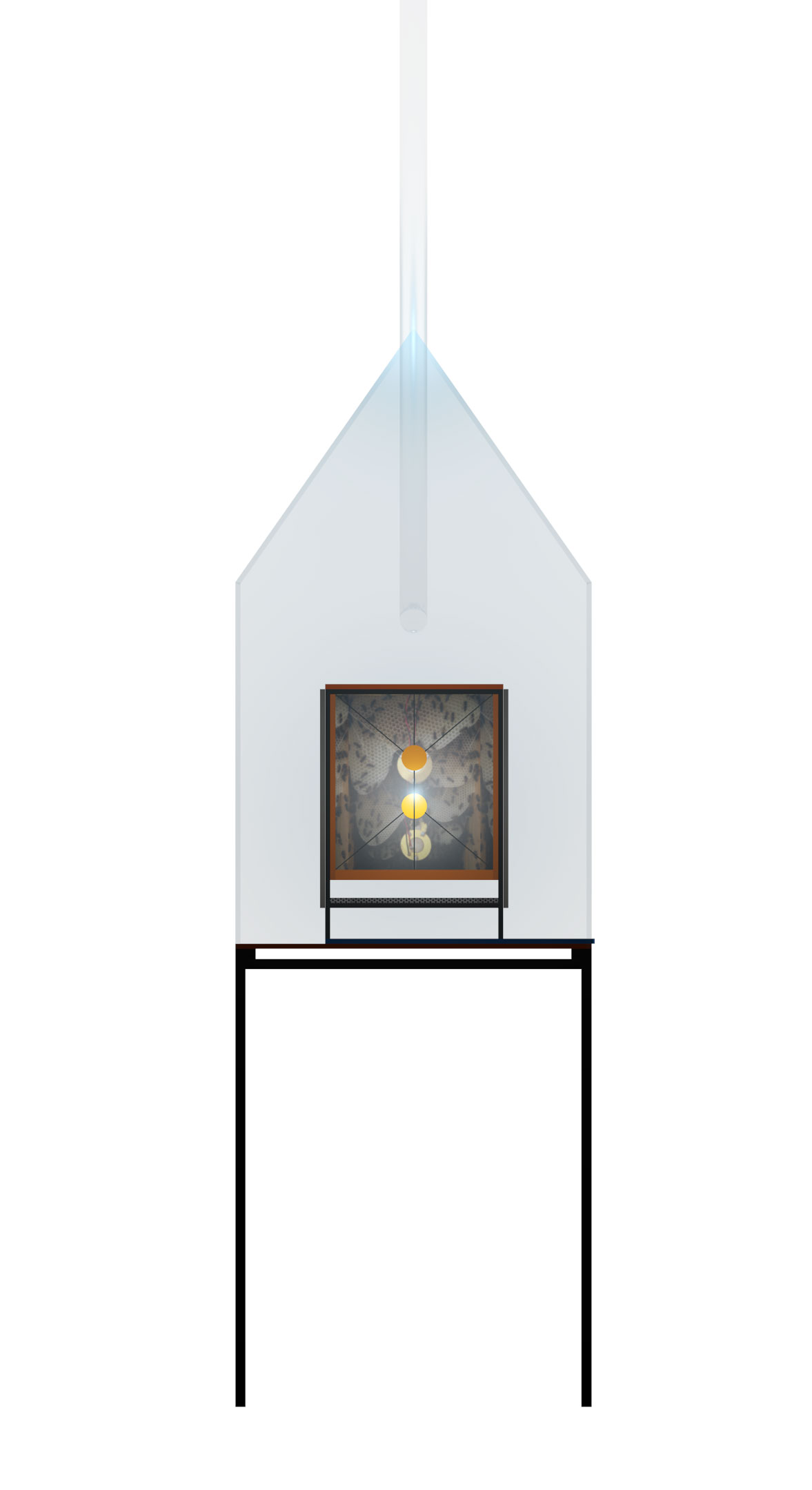
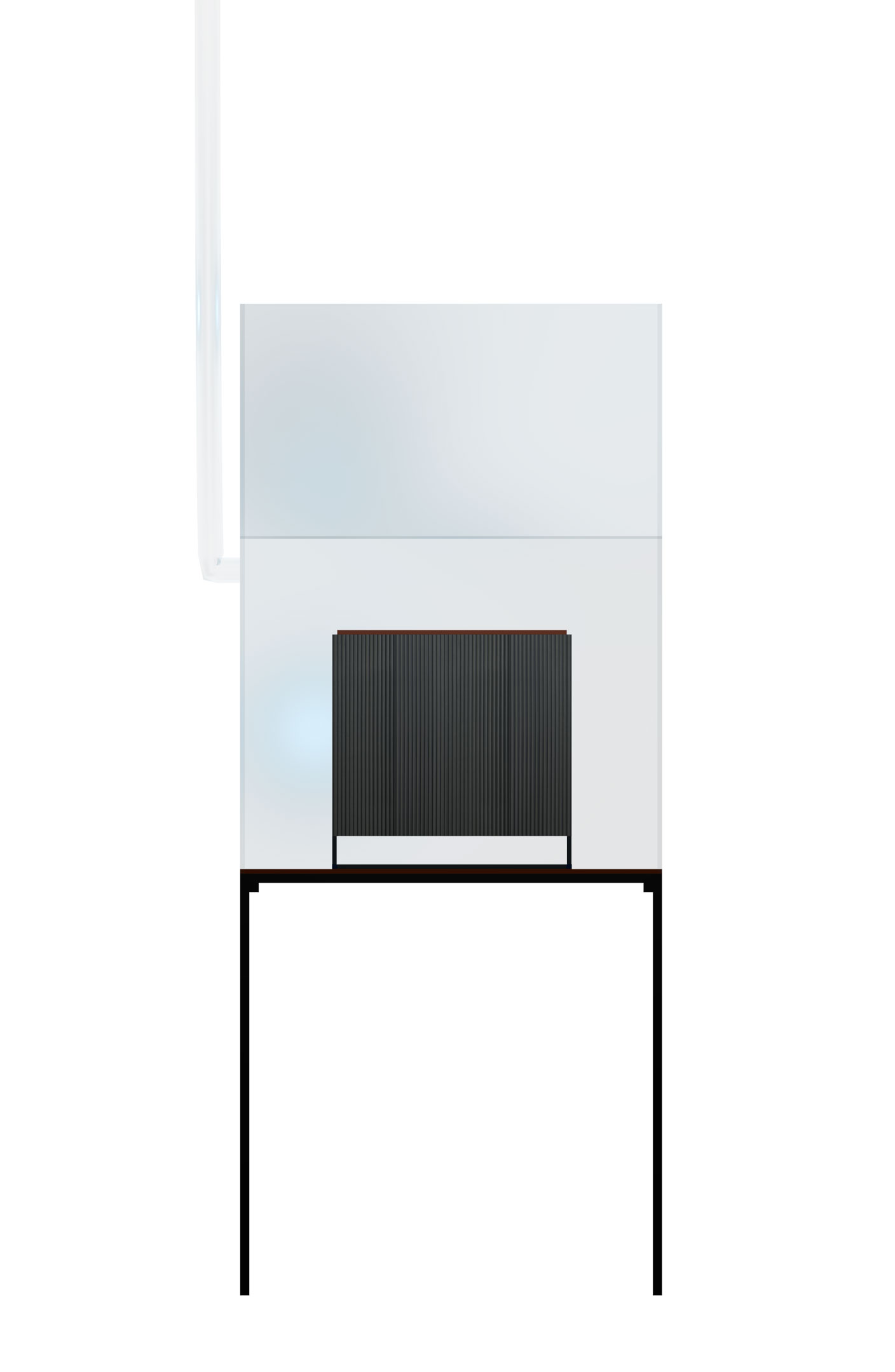
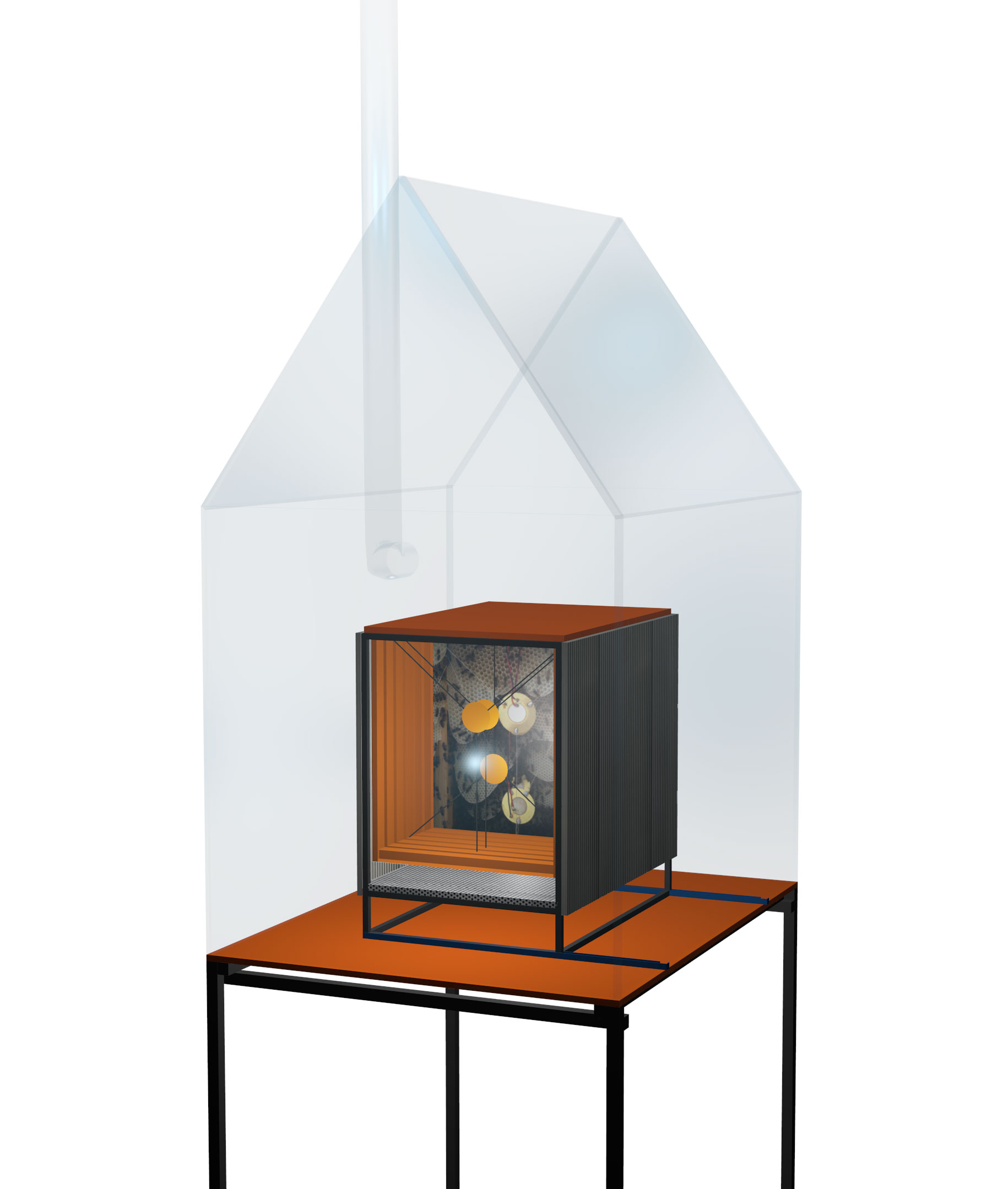
the exact measures of the outside platform:
Width: 225 cm / Depth: 637 cm / Side wall height: 473 cm
Installation Transparent Beehive:
- a new, custom-made version of the Transparent Beehive sculpture will be developed and produced. This living sculpture is adapted to host a bee colony inside it for the duration of the exhibition Beehave in museum Miró.
- the beehive will be designed conform to the needs of a real bee colony. The design will consist of a ‘double beehive’ which means that there is a Transparant Beehive nest at the core, protected with wood and aluminium for insulation purposes. This core basis is positioned inside a transparent plexi box that is well ventilated and that can be opened to take care of the bees. On top of this outer transparent box, there is a transparent pipe going up, over the rooftop of the museum and with a corner of 90°.
- The beehive has frames with contact microphones, the sound signal can be connected with other installations in the exhibition. The artist A.Maes provides a connection with mini-jack, coming out of the beehive on the outside platform. From there, connections and lenght of (audio) cables need to be taken care of by the artists that will use the sound input of the Transparent Beehive. Relative to the distance between the Transparent Beehive (on the outside platform) and the other installation (the architects) inside the museum, an specific amplifier needs to be used. This has to be taken care of by the architect-installation.
- we have to build a protection cage in mosquito gauze. This needs to be constructed on the outside platform to protect the visitors of the museum (cafe) of all unwanted contact with the bees.
- this protection cage needs a solid rooftop (can be a cheap construction material) to protect the beehive and the bees from rain and sun. The sides can be regular gauze, but 1 side needs a primitive kind of ‘door’ so that the beekeeper can get in the cage if working with the bees is necessary.
practical:
- contact different construction shops. Steven Thys, Luis Quesada, …
- which kind of hive-frames; the exact measures + a photo of the bee colony on the frames.
layens frames, alex
- AgriTextile for shading, anti-insect, …: http://www.petextile.com/
Waterproof rooftop

